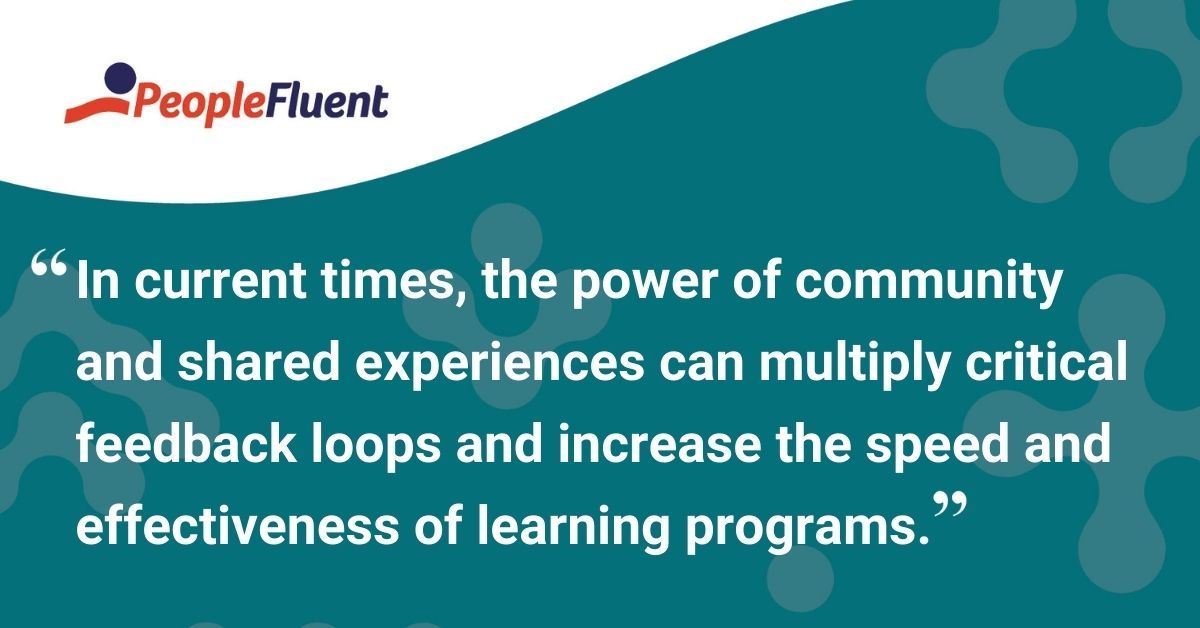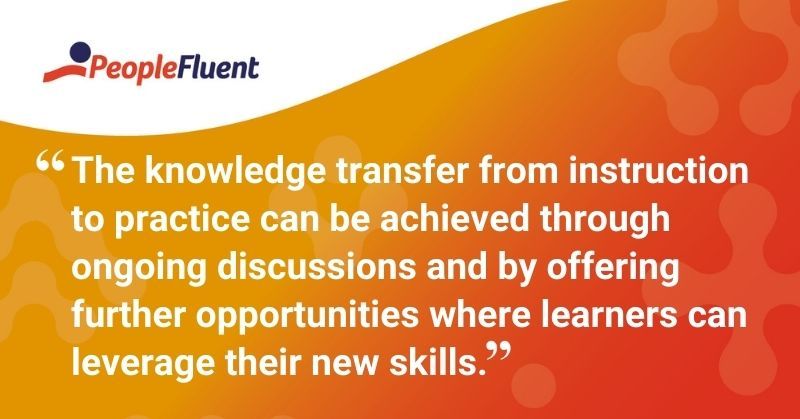Published: Sep 29, 2020Time to read: 5mins Category: Learning
How to Design a Distance-Friendly Blended Learning Experience
The way we train our people is changing, even more so since the start of the coronavirus pandemic. During the recent webinar, ‘Distance Learning: Strategies, Approaches and Content’, Andrew Joly, Director of Strategic Design at our sister company LEO Learning, offered his expertise on some of the key requirements for delivering a successful distance learning program. Learning designers can strike the perfect balance required by leveraging technology, content, and strategy. To help you decide on the right mix of approaches for a distance-friendly blended learning experience, read on.
Andrew’s opening quote sheds light on what most of us have been up against these last six months, since the COVID-19 outbreak. Feeling disconnected, disengaged, and as if we’re treading water. Yet, it can be difficult for managers to identify which employees need additional support to remain engaged and productive—especially from a distance.
So, how can learning design make this feat easier and more effective for line managers and their respective employees? It starts by understanding how to identify the critical learning need, followed by knowing when and how to deliver the right kind of virtual blended learning experiences to address that need.
Related reading: ‘Permanent Remote Working? How COVID-19 Is Reshaping the L&D Landscape’
When Is Something Learned?
L&D is in the business of imparting knowledge to change behaviors. We believe something can be considered to be learned when the appropriate behavior happens at the moment of need. This is also referred to as “the moment of impact (MoI)” or even the “Moment that Matters” and is important for measuring the effectiveness of learning.
In order to provide learners with the necessary program and associated support to enable that ‘Performance Behaviour’ (as we refer to it) to happen, learning designers work backwards from this moment.
Handpicked for you: ‘3 Ways to Support Informal Learning (Even During Lockdown)’
Is Your Distance Learning Program Working?
There’s clear pressure for all L&D professionals to deliver a personalized learning experience, rather than simply offering a “one-size-fits-all” learning package. Learning designers have the opportunity to reinforce a connected learning community, a critical component for distance learning programs.
In current times, the power of community and shared experiences can multiply critical feedback loops and increase the speed and effectiveness of learning programs. These shared connections and experiences are a focus for strategic learning designers as they look for ways to help learners build confidence and ensure they reach their desired performance behaviors.

You might also like: ‘How to Measure the Success of Learning Programs’
Getting the Balance Right Between Learners and Organizations
First and foremost, learning designers must understand that people are navigating many challenges in their professional and personal lives—many of which are uncharted for all of us. With this knowledge, it’s important for managers and business leaders to help people find time to engage with learning initiatives as they navigate through competing priorities.
Learning designers are now stressing how critical it is to build and support a journey that empowers learners to reach desired performance behaviors. To do this, LEO Learning recommends a three-step approach for delivering an effective blended learning environment:
Also read: ‘Why a Learning Ecosystem Will Supercharge Your Blended Learning Programs’
Step 1: Align
Alignment is about communicating the benefits of learning and helping learners reach the right place for their journey. Strategies like line manager-led coaching discussions or self-assessments can help employees identify and reflect on their previously unknown skills gaps as they prepare for the learning.
As we attempt to balance learning with an employee’s other tasks and responsibilities, learning is often the first priority to take a backseat. To keep learning front of mind, start by communicating your broad vision before and during the learner’s journey. This helps set learner expectations and prime them for learning delivery.
Step 2: Deliver
While gamification and/or video tools (like a learning experience platform) can help deliver beautiful learning packages, technology is just one piece of the puzzle. At this step in the process, learners need a balance of the proper tools and learning content in order to acquire and practice the new skills they’ve learned.
Job aides, templates, and simulations are all valuable tools that help learners reflect and build on their knowledge. Furthermore, learners should continue having discussions with line managers, as well as peers and coaches, throughout the delivery phase of their learning journey.

More from the blog: ‘Hollywood Hacks: 4 Ideas for Affordable, Professional-Quality Video Learning Content’
Step 3: Sustain
Sustain is about transferring a learner’s knowledge into their daily jobs. Building confidence is critical at this point as it ensures that learning rates don’t drop off. Putting it into practice in a worker’s everyday role will help them sustain and grow their learning.
This knowledge transfer from instruction to practice can be achieved through ongoing discussions and collaboration, journaling about new practices and/or performance behaviors, and by offering further practice opportunities where learners can leverage their new skills.
To take advantage of more insights from the distance learning webinar, access the recording here. Or get in touch to find out more about our award-winning learning platforms.
Note: A version of this post originally appeared on the LEO Learning blog.
Discover How Learning Builds Skills and Ensures Compliance
Design, deploy, track, analyze, and report on enterprise learning and compliance programs. PeopleFluent helps you execute your programs seamlessly, so employees upgrade their skills and you get results.